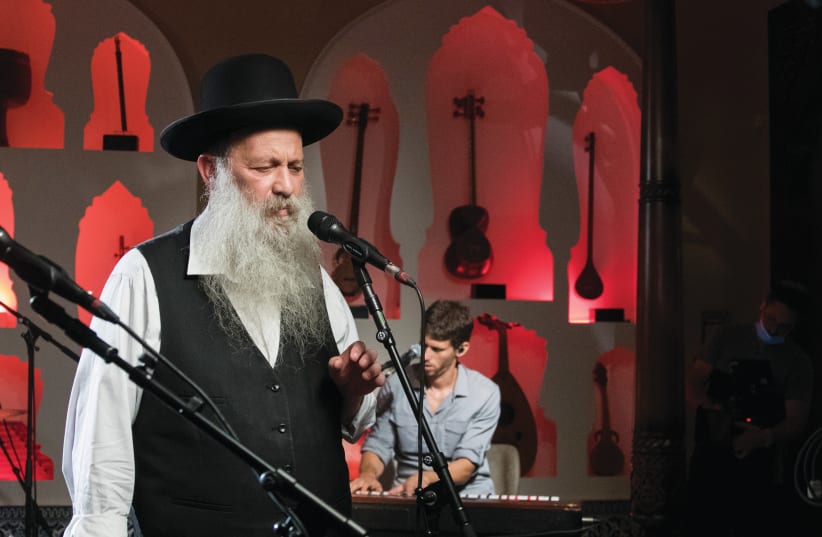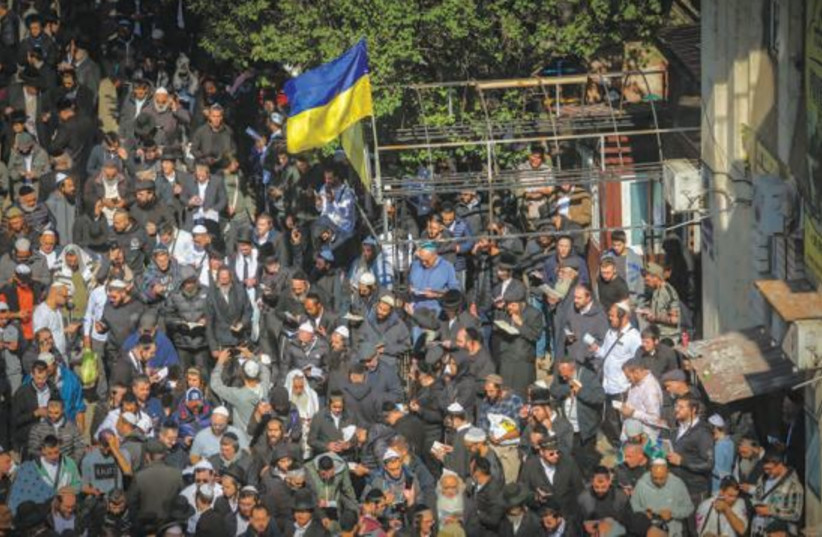Contemporary Breslov Hassidism has the most creative hassidic music scene.
This is not sanctioned Breslov music, since Breslov Hassidim do not have a recognized central leadership. Rather, there are numerous Breslov factions, each with its own character and emphasis. The music, often inspired by the teachings of Rabbi Nahman of Breslov (1772-1810), is produced and performed by Breslov Hassidim, but there is no official imprimatur of a hassidic master or entire community.
Examples of current musicians who identify as Breslov Hassidim and reflect this trend include Adi Ran; Shuli Rand; Yosef Karduner; Nissim Baruch Black; and Ron Aharon Caras. Several bands, including the hardcore punk band Moshiach Oi!, formed in 2008, and the reggae band Shlepping Nachas, formed in 2019, share some identification with Breslov. As a rule, these musicians did not grow up as Breslov Hassidim but joined the ranks of Breslov later in life.
For example, Karduner joined while in his 20s, while Ran and Rand joined during their 30s. These musicians are not necessarily part of the same stream within Breslov Hassidism. Indeed, Rand is a student of Rabbi Shalom Arush, while Karduner is a student of Rabbi Shimon Yosef Hakohen Wizenfeld. Thus, it is not a particular Breslov faction that has a propensity for music. It seems that the musical trend is connected to Breslov in a deeper way. Perhaps Breslov Hassidism attracts musicians; perhaps the core of Rabbi Nahman’s teachings encourages musical composition and performance.
Some Breslov musicians have achieved recognition and fame way beyond their community. Their music is appreciated by Israeli and Jewish audiences across the spectrum. Indeed, these Breslov musicians are on the vanguard of original Hebrew music.
Breslov music and the horrors of October 7
A FEW months ago, in January 2024, Shuli Rand recorded a song that reflected on the tragic events of October 7. The song provides a space for the tough theological question Where was God on that Shemini Atzeret-Simchat Torah?
The song uses the style of Israeli pop, with influences of alt rock and hip-hop. The lyrics employ biblical phrases and allusions to rabbinic traditions and texts. The song was written in Hebrew but is presented here in English translation.
In the first stanza, Rand depicts his understanding of the all-knowing God:
He who stands behind me, before me, above me / He is the one who stands on me / As I rise, as I fall / As I stumble in the darkness / He knows me very well / Knows me not well / Knows from the beginning to the end / Your banner upon me is love that is true / But / Why are your mercies a fist?
While starting in the descriptive third person, Rand moves to second person with an accusatory tone toward the Almighty: Why do we feel that You have punched us in the gut? Rand taps into what people might be feeling at this time. From here – in the classic Breslov style of hitbodedut, or meditative solitude – Rand continues his personal conversation with God, while at the same time inviting others to join him. The language is not lofty or formulaic; rather, the song reads like a person talking to a mate:
Yes, to You I am talking, to You, You / the hidden one / the one who is hiding amongst the baggage / the one who slips away between the shadows / is silent / even as the house is burning / peeks out from a pot plant / appears at the window / caressing, disappearing, and dissipating / So how is it that I remember everything / run to dip [in the mikveh] / but immediately forget.
Here, Rand begins to reveal what has precipitated his heated conversation with God. As the song progresses, it becomes clear that the burning house symbolizes the homes in Be’eri, Kfar Aza, and other southern Israel areas that marauding terrorists destroyed:
And as for me, who am I, not a prophet / just a son to my mother and to my father / not a medium, not the voice of the generation / not one who abstains, not like the empowered lion / not the bringer of tidings on a donkey / Rather, I dwell amongst my people / not dwelling in security / heavy rain is about to fall / I know, I come from the area.
Rand is aware that he is not some grand figure – not a prophet nor a hassidic master nor a messiah. He is one of the people. From this vantage, he understands that there is no safety, no security. In the fourth stanza, his indictment of God becomes more forceful:
So it is true that for everything there is a reason and a time and an era beneath heaven / But this is a real siren / the water has reached the neck / look down from Your dwelling place / start the move already / will you not hear Your impoverished ones / how they are crying from the sewers?
Rand reminds himself that God has a reason for everything, but then he reminds God how serious the current situation is, urging the Almighty to act for those who are mired in the sewers – perhaps an allusion to the hostages being held in underground tunnels.
At this point, the refrain breaks into the song with a line from the Passover Haggadah: “Let the day that is neither day nor night draw close.” This line is based on a biblical verse about the end of days (Zachariah 14:7). The tune of the refrain is eerie and unnerving, suggesting a break from the harsh reality of the song and a complex prayer for the future.
Rand then turns to a historical account of sorts in which he acknowledges that we should have recognized God’s hand in our successes. Accepting part of the blame is quickly replaced by returning to the accusations against God:
Yes, we made aliyah, we created, we built, we dreamed, we loved / we did not whisper prayers / how tall the wheat stands in our fields / how beautiful the nights are in the cemeteries / with holy ones [buried] in rows / flowers, showers, sprinklers / they burned our synagogue / foxes all over the town / So we sat there, there we also rent [our clothes], there we also cried / enveloped in silence / the desecrated earth, the cursed Sabbath / the tremor of hostages / outside the sword deals death, in the rooms terror / the blood of a boy, the blood of a girl, the blood of a suckling baby / cry out from the earth.
So it is true that for everything there is a reason and a time and an era beneath heaven / but, as for me, I will die in another moment / the water has reached the neck / In Your glorious might appear already, be placated / can You not hear Your orphans / how they are crying from the edge?
Once again, the refrain breaks in with its eerie tune. The song then repeats the second stanza, followed by the first, with the refrain overlaying each one. The refrain ends before the song’s final line, abruptly ending with the unanswered, charged question: Why are your mercies a fist? ■
The writer is a senior faculty member at the Pardes Institute of Jewish Studies and rabbi in Tzur Hadassah.

